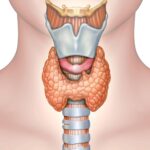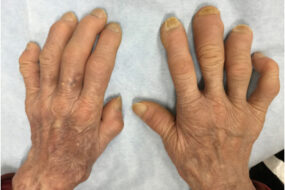- Home
- INTERNAL MEDICINE
- Hemolytic Anemia

Hemolytic anemia is a condition characterized by the premature destruction of red blood cells (RBCs), leading to a decreased lifespan of RBCs and a corresponding increase in erythropoiesis to compensate for the loss.
This excessive breakdown of RBCs results in the release of hemoglobin into the bloodstream, which can cause various clinical symptoms and complications. Hemolytic anemia can be classified as intravascular or extravascular, and may be inherited or acquired.
Pathophysiology
Hemolysis, the destruction of red blood cells, can occur through various mechanisms:
- Intravascular Hemolysis: RBCs are destroyed within the circulation due to factors such as complement activation, physical damage, or toxic insults.
- Extravascular Hemolysis: RBCs are phagocytosed by macrophages, primarily in the spleen and liver, due to alterations in their membrane or the presence of surface-bound antibodies.
The breakdown of hemoglobin releases heme and iron, leading to:
- Increased unconjugated bilirubin, which can cause jaundice.
- Elevated levels of lactate dehydrogenase (LDH), an enzyme released during RBC destruction.
- Decreased haptoglobin, a protein that binds free hemoglobin.
Classification
Hemolytic anemia is broadly classified into inherited and acquired forms.
- Inherited Hemolytic Anemias: These result from genetic defects affecting RBC structure or metabolism.
- Membrane Defects: Hereditary spherocytosis, hereditary elliptocytosis.
- Enzyme Deficiencies: Glucose-6-phosphate dehydrogenase (G6PD) deficiency, pyruvate kinase deficiency.
- Hemoglobinopathies: Sickle cell disease, thalassemia.
- Acquired Hemolytic Anemias: Caused by external factors that lead to RBC destruction.
- Immune-Mediated: Autoimmune hemolytic anemia (AIHA), alloimmune hemolytic anemia (e.g., hemolytic disease of the newborn).
- Microangiopathic Hemolytic Anemia (MAHA): Associated with conditions such as thrombotic thrombocytopenic purpura (TTP), hemolytic uremic syndrome (HUS), and disseminated intravascular coagulation (DIC).
- Infections: Malaria, babesiosis.
- Drugs and Toxins: Some medications can induce immune-mediated hemolysis (e.g., penicillin), or have a direct toxic effect on RBCs.
- Mechanical Destruction: Prosthetic heart valves, severe burns.
Clinical Features
The symptoms of hemolytic anemia vary depending on the rate of hemolysis and the underlying cause.
- General Symptoms of Anemia:
- Fatigue, weakness, and pallor.
- Dyspnea on exertion.
- Tachycardia and palpitations.
- Specific Symptoms of Hemolysis:
- Jaundice: Due to elevated unconjugated bilirubin.
- Dark Urine: Resulting from hemoglobinuria (in intravascular hemolysis) or urobilinogen.
- Splenomegaly: Common in chronic extravascular hemolysis.
- Gallstones: Chronic hemolysis increases the risk of pigment gallstones due to excess bilirubin.
- Symptoms Related to Underlying Cause:
- Autoimmune Hemolytic Anemia: May present with fever, malaise, or Raynaud’s phenomenon.
- Paroxysmal Nocturnal Hemoglobinuria (PNH): Hemoglobinuria often occurs in the morning, along with symptoms of thrombosis.
Diagnostic Evaluation
A thorough workup is necessary to confirm hemolysis, determine its type, and identify the underlying cause.
- Laboratory Findings Indicative of Hemolysis:
- Decreased Hemoglobin and Hematocrit: Reflecting anemia.
- Elevated Reticulocyte Count: Indicating increased erythropoiesis.
- Increased Lactate Dehydrogenase (LDH): A marker of cell turnover.
- Decreased Haptoglobin: Binds free hemoglobin; levels drop in hemolysis.
- Elevated Unconjugated Bilirubin: From breakdown of hemoglobin.
- Peripheral Blood Smear: Can provide clues about the type of hemolysis.
- Schistocytes: Seen in microangiopathic hemolytic anemia.
- Spherocytes: Common in hereditary spherocytosis and autoimmune hemolytic anemia.
- Heinz Bodies: Suggestive of G6PD deficiency.
- Additional Diagnostic Tests Based on Suspicion:
- Direct Antiglobulin Test (DAT/Coombs Test): Positive in autoimmune hemolytic anemia.
- G6PD Activity Assay: For suspected G6PD deficiency.
- Hemoglobin Electrophoresis: For diagnosing hemoglobinopathies like sickle cell disease or thalassemia.
- Flow Cytometry for CD55/CD59: To diagnose paroxysmal nocturnal hemoglobinuria (PNH).
- Additional Investigations for Underlying Causes:
- Coagulation Studies (PT, aPTT): For disseminated intravascular coagulation.
- Renal Function Tests: To assess for hemolytic uremic syndrome.
- Blood Cultures: If infection is suspected (e.g., malaria, babesiosis).
Management
The treatment of hemolytic anemia focuses on addressing the underlying cause, managing symptoms, and preventing complications.
- General Measures:
- Folic Acid Supplementation: To support increased erythropoiesis.
- Blood Transfusions: May be necessary for severe anemia but should be used cautiously.
- Specific Treatments:
- Immune-Mediated Hemolysis:
- Corticosteroids: First-line treatment for autoimmune hemolytic anemia.
- Immunosuppressants (e.g., rituximab, azathioprine): For steroid-resistant cases.
- Intravenous Immunoglobulin (IVIG): Particularly useful in acute hemolytic episodes.
- Hemoglobinopathies:
- Hydroxyurea: For sickle cell disease to reduce the frequency of painful crises.
- Regular Blood Transfusions: In severe cases of thalassemia.
- Iron Chelation Therapy: For transfusion-dependent patients.
- Enzyme Deficiencies (e.g., G6PD):
- Avoid Triggering Agents: Such as certain drugs (e.g., sulfa drugs, antimalarials) and fava beans.
- Microangiopathic Hemolytic Anemia:
- Plasma Exchange: For thrombotic thrombocytopenic purpura (TTP).
- Supportive Care: Including dialysis in cases of hemolytic uremic syndrome.
- Immune-Mediated Hemolysis:
- Surgical Interventions:
- Splenectomy: Can be beneficial in conditions such as hereditary spherocytosis, autoimmune hemolytic anemia resistant to medical therapy, or when splenomegaly contributes significantly to hemolysis.
Complications
Untreated or poorly managed hemolytic anemia can lead to:
- Severe Anemia: Resulting in cardiovascular strain and potential heart failure.
- Hemolytic Crisis: Particularly in conditions like G6PD deficiency and sickle cell disease.
- Iron Overload: From chronic transfusions, leading to organ damage (liver, heart, endocrine glands).
- Increased Risk of Thrombosis: Seen in conditions like paroxysmal nocturnal hemoglobinuria.
- Pigment Gallstones: Due to chronic elevation of bilirubin levels.
Prognosis
The outlook for hemolytic anemia depends on the cause, severity, and response to treatment. With prompt and appropriate management, many forms of hemolytic anemia have a good prognosis, although some, such as sickle cell disease or paroxysmal nocturnal hemoglobinuria, may require lifelong monitoring and treatment.












